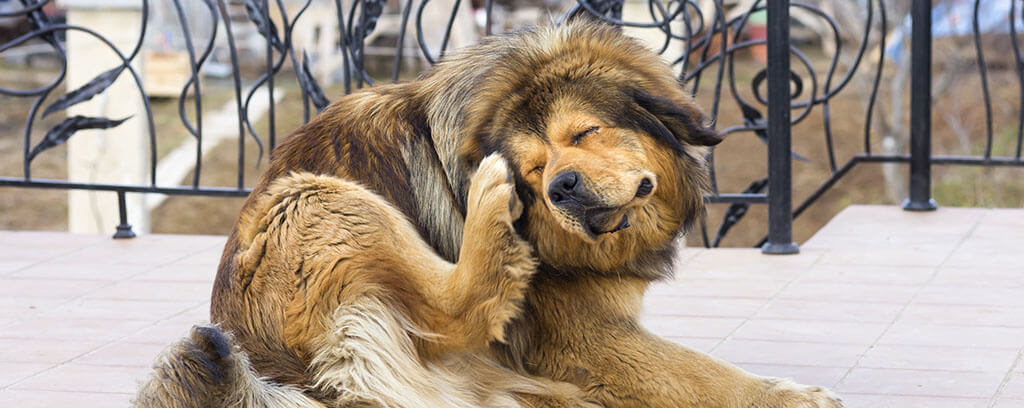Explore the complexities of skin allergies in dogs with our definitive guide on identifying and treating those pesky allergy bumps.
Dealing with Hives and Other Allergy Bumps on Dogs

If you are a dog owner, chances are that, at some point, you have noticed bumps on your dog’s skin. You have also likely wondered what those bumps were and how to get rid of them.
One of the most common reasons that dogs get skin bumps is because of allergies. These bumps can cause discomfort, itching, and irritation, so it’s important to take steps to diagnose and manage the condition.
In this article, we will explore how dog skin bumps are caused by allergies. We will delve into the different types of bumps, the immune system’s role, and how to differentiate between allergy bumps and other skin conditions.
By learning more about these skin bumps, we can provide the best care and support for our canine companions, ensuring they stay happy, healthy, and itch-free.
Key facts:
- Allergies are a common cause of skin bumps in dogs.
- Allergy bumps result from the immune system’s overreaction to allergens, triggering inflammation and fluid accumulation in the skin layers.
- Other skin conditions like insect bites, mange, and infections can also cause bumps, so achieving an accurate diagnosis is important.
- Treatments for allergy bumps in dogs include medications to reduce allergy symptoms, medicated shampoos to reduce skin inflammation, treat secondary skin infections, and reduce the dog’s exposure to allergens.
- Adding omega-3 fatty acids to a dog’s diet can improve skin health and reduce allergy symptoms like skin bumps.
What are allergy bumps?
Allergies often cause bumps on the skin of dogs. The appearance and characteristics of these skin bumps can differ based on the underlying cause of the allergy and the dog’s reaction.
Here are the different types of skin bumps commonly associated with allergies in dogs:
- Hives (urticaria): Hives on dogs are red, raised bumps that can appear suddenly and are usually itchy. They can also disappear just as fast as they appear. Hives in dogs occur as individual bumps or clusters of various sizes and shapes. They are sometimes called papules, welts, or wheals.
- Vesicles: Vesicles are small blisters filled with a clear fluid. These bumps may appear alone or in clusters and are most often associated with contact allergies.
- Pustules: A pustule is a small, elevated bump on the skin filled with pus, which is a thick, yellowish, or greenish fluid composed of dead white blood cells, bacteria, and tissue debris. They are a result of a small, localized bacterial infection and often involve the hair follicles (folliculitis).
- Other skin changes: Allergies can also cause other skin changes that, while not bumps, can still make the skin feel rough to the touch. These skin changes can include erosions or ulcers (open sores), crusts and scabs, or dry, flaky, scaly skin.
The appearance of these bumps and skin changes can be influenced by the dog’s breed, individual sensitivity, and the specific allergen involved. Some dogs may have a combination of these different types of bumps on their skin.

How do allergic reactions cause skin changes?
Allergy bumps are a result of the body’s immune system reacting to allergens. When a dog is exposed to something they are allergic to, their immune system overreacts to what it sees as a threat.
The process of this immune reaction can be summarized as follows:
First, the dog comes into contact with an allergen through inhalation, ingestion, or direct skin contact.
Second, in response to the allergen, the dog’s immune system releases various chemicals, including histamines and cytokines. Histamines trigger allergy symptoms such as sneezing, itching, and swelling. On the other hand, cytokines act as messengers between cells, coordinating the response during an allergic reaction. They signal other cells to join the fight against the allergen, which can lead to inflammation and more allergy symptoms.
Third, the histamines and cytokines cause blood vessels to dilate, resulting in increased blood flow to the affected area. This leads to redness, swelling, and itching.
Lastly, the inflammation and immune response can cause fluid to accumulate in the skin layers, resulting in the formation of bumps. Bumps can also occur secondary to scratching as the dog attempts to relieve the itching.
How quickly do skin bumps from allergies appear?
The timing of the appearance of allergic skin bumps on a dog’s skin can vary depending on the type of allergic reaction and the individual dog’s sensitivity to the allergen.
Acute allergic reactions, such as anaphylaxis, can be severe and life-threatening. Bee sting allergy is a well-known type of acute allergic reaction.
Anaphylaxis in dogs can lead to rapid and widespread skin reactions, including hives, swelling, and redness, appearing within minutes to hours after exposure to an allergen. It can progress quickly, causing severe symptoms such as difficulty breathing, vomiting, diarrhea, collapse, and shock. Not all dogs will develop hives as the first sign of anaphylaxis.
Immediate veterinary attention is essential in anaphylactic cases to ensure prompt treatment and prevent further complications.
Delayed allergic reactions show up hours to days after allergen exposure. In dogs, these reactions lead to the gradual development of skin bumps like papules or pustules, causing discomfort and irritation.
An example of delayed allergic reactions in dogs is contact allergies, where skin bumps appear in areas that have directly encountered the allergen, such as certain fabrics or cleaning products.
Another common example is food allergies, where repeated exposure to specific food ingredients can lead to skin issues over time.
Differences between allergy bumps and other skin conditions
It can sometimes be difficult to tell the difference between skin bumps caused by allergies and bumps caused by other skin conditions in dogs since they often look very similar.
Many skin conditions require specific tests or treatments. Consulting a veterinarian is necessary for accurate diagnosis and treatment.
Some skin conditions that dog owners may confuse with allergies include:
Flea bites
Flea bites, while very irritating to the dog, are usually seen as small red dots on the skin rather than bumps. Fleabite allergies, on the other hand, cause small, red bumps or raised lesions (fleabite dermatitis), usually found on the lower back, tail base, and hindquarters. This is a type of allergic reaction to the flea’s saliva and causes intense itching and secondary hair loss.
Mange
Mange mites can cause red, scaly, or crusty skin, hair loss, and intense itching. The bumps are often localized to specific areas, such as the edges of the ears and on the elbows, legs, chest, and abdomen. Diagnosis requires a skin scraping test by a veterinarian.
Bacterial or yeast infections
Skin infections can result in pustules, sores, or crusting. The bumps may be accompanied by a foul smell, oozing discharge, or hair loss. A veterinarian can conduct tests like impressions smears of the skin to confirm the infection.
Ringworm
Ringworm is a fungal skin infection that causes circular areas of hair loss with red, raised edges. The skin may be scaly, and the lesions can appear on various body parts.
Hot Spots (Acute Moist Dermatitis)
Hot spots are localized, inflamed, moist, and painful sores that develop quickly. These are spots of skin infection where bacteria have entered damaged skin.
Mast Cell Tumors
Mast cell tumors are a type of cancer that develop from mast cells – cells important in the body’s immune response and allergic reactions. These tumors are common skin tumors in dogs, appearing as single or multiple lumps of varying size that may grow rapidly. They can be itchy and cause discomfort.
Other Skin Tumors
Other skin tumors include lipomas, sebaceous gland adenomas, and melanomas, among others. Some tumors can be malignant and require prompt veterinary attention. Any unusual or growing skin bump should be examined by a veterinarian for accurate diagnosis and appropriate management.

Diagnosing skin problems caused by allergies
Confirming allergies requires a thorough evaluation by a veterinarian, including detailed history taking and physical examination of the dog.
The veterinarian will also likely perform tests to identify the cause of the bumps. In some cases, the veterinarian may even need to take a biopsy of the affected skin for further evaluation in a laboratory.
Once other causes have been successfully ruled out, allergies are left as the most likely cause of the bumps. Confirming the specific allergens causing the skin bumps may be done in different ways, including allergy tests and food elimination diets.
Alternatively, the dog’s response to allergy treatments can provide additional evidence of an allergic reaction. Improvement of clinical signs with specific treatments can support the diagnosis of allergies.
How to treat allergy bumps on dogs
Treating skin bumps caused by allergies in dogs involves a multi-faceted approach that focuses on relieving symptoms, managing the underlying allergy, and preventing future flare-ups. Options for treating dog allergy bumps include:
- Symptomatic relief: Your veterinarian may prescribe medications to help with the itching and inflammation caused by the allergies.
- Allergen avoidance: This may involve changing the dog’s diet to a hypoallergenic one, reducing exposure to environmental allergens, or using pet-safe cleaning products and fabrics.
- Immunotherapy (allergy shots): This involves administering small amounts of the identified allergen to desensitize the dog’s immune system gradually.
- Biological therapy: Biological therapy is a treatment that mimics your dog’s immune system to neutralize the primary protein responsible for itching in the dog’s body.
- Regular bathing and grooming: Regular bathing (every 1-2 weeks) using hypoallergenic or medicated shampoos can help remove allergens and irritants and treat secondary skin infections. Products should be thoroughly rinsed and not left to dry on the skin.
- Flea control: Dogs with flea bite allergies will need effective flea control measures to prevent allergic reactions and should be treated year-round.
- Omega-3 fatty acid supplements: Supplementing the dog’s diet with omega-3 fatty acids can help improve skin health and reduce inflammation associated with allergies.
- Protective clothing: In some cases, especially in dogs with environmental or contact allergies, wearing protective clothing (e.g., doggy shirts or booties) may help reduce exposure to allergens or irritants.
Keep in mind that every dog has unique allergies, so treatment plans should be customized to their specific needs. Managing and providing long-term relief for your dog’s skin bumps caused by allergies requires patience, consistency, and effective care. Challenging cases may even need to be addressed by a veterinary dermatologist.
A final word on skin allergy bumps
Allergies can cause various types of skin bumps in dogs, but they’re not the only culprit. Differentiating between allergy bumps and other skin conditions is necessary for accurate diagnosis and proper treatment.
Remember to consult your veterinarian for professional advice on any skin problems seen in your dog. Early intervention can help relieve symptoms and prevent potential complications.
With the correct diagnosis and timely treatment, you can ensure that your pet is healthy and happy. With the right care, your four-legged friend will be back to feeling their best in no time!
FAQs
Why is my dog breaking out in bumps?
Skin bumps in dogs can be caused by allergies or other skin conditions. To accurately diagnose the problem, it is best to consult a veterinarian who will perform tests and a physical examination. Depending on the results, the veterinarian may recommend further testing or treatment.
How long do allergy bumps last on dogs?
The duration varies depending on the cause, severity, and allergen exposure. In mild cases with brief exposure, bumps may last a few hours to a couple of days. However, in severe reactions or continuous exposure, bumps persist until the allergen is identified and removed and the allergy symptoms are treated.
Can I give my dog Benadryl for bumps on the skin?
Benadryl(r), or diphenhydramine, is a well-known antihistamine that works by blocking histamine, a chemical produced by the body during an allergic reaction. Benadryl can help some dogs with mild allergy symptoms, but you should never give this, or any other human medication, to dogs unless recommended by a veterinarian.
Are dog hives an emergency?
In most cases, dog hives are not an emergency, though you should still consult a veterinarian for further evaluation and treatment. Hives on dogs are an emergency when they are part of a severe allergic reaction known as anaphylaxis. Anaphylaxis is a life-threatening condition that can occur rapidly and affect the whole body. If your dog develops hives along with other symptoms such as facial swelling, difficulty breathing, vomiting, diarrhea, collapse, or lethargy, immediate veterinary assessment is necessary.
What foods should dogs with skin allergies avoid?
To identify which foods to avoid, allergy testing or elimination diet trials are necessary. Dog food sensitivities are often linked to proteins like chicken and beef. Elimination diets typically begin by removing one or both of these proteins to assess allergy improvement.
What does a grass allergy look like in a dog?
Grass allergies in dogs can cause symptoms such as widespread itchy or irritated skin, red or watery eyes, and sneezing. Dogs may also lick and chew on their feet, have a rash on their bellies and inner thighs, or develop a yeast infection between their toes. You might also see grass allergy bumps on dogs, which may appear as hives or small, raised bumps. Diagnosis is based on the overall clinical picture and allergy testing.
Sources
https://www.dvm360.com/view/identifying-food-allergies-veterinary-elimination-diet-trial
https://www.merckvetmanual.com/dog-owners/skin-disorders-of-dogs/hives-and-rashes-urticaria-in-dogs
 W
W





